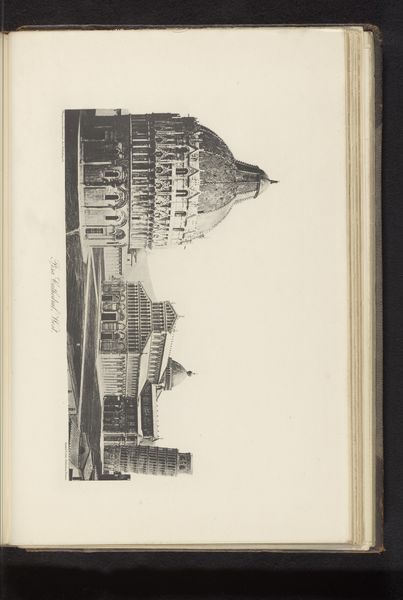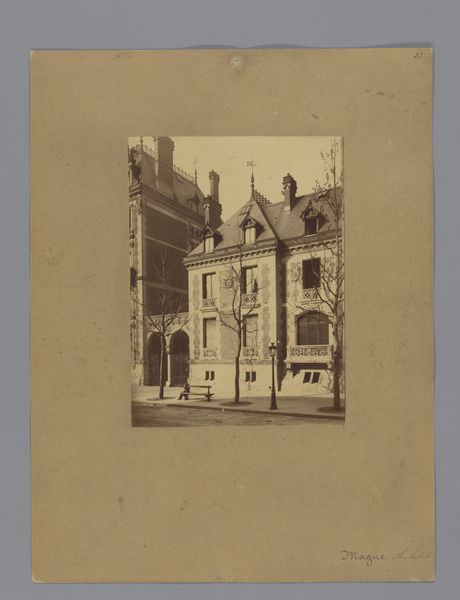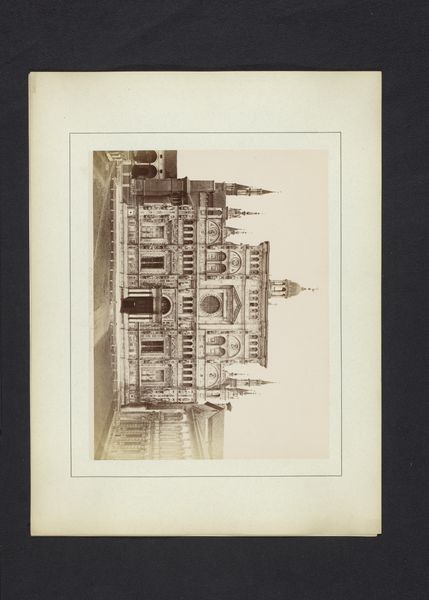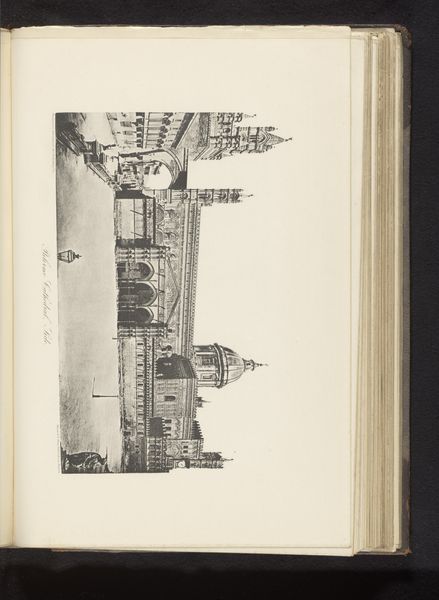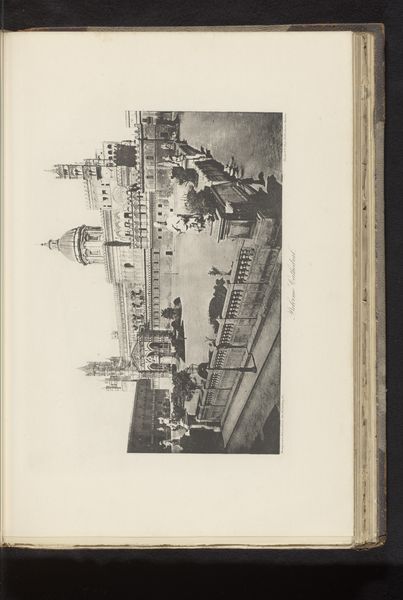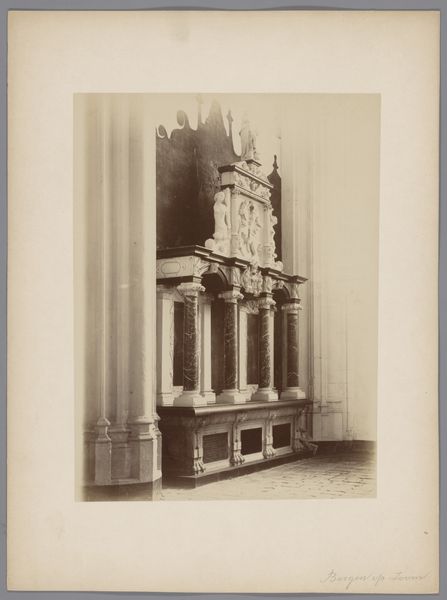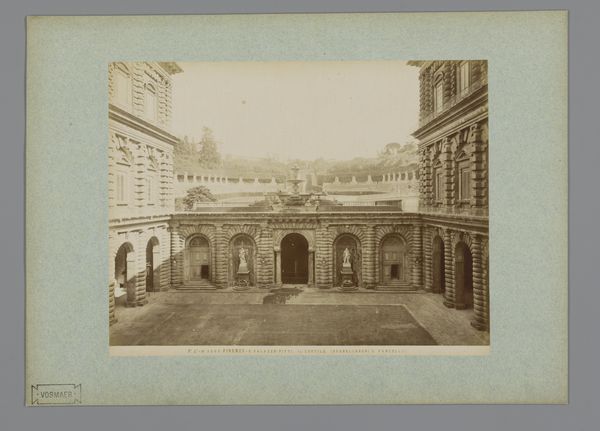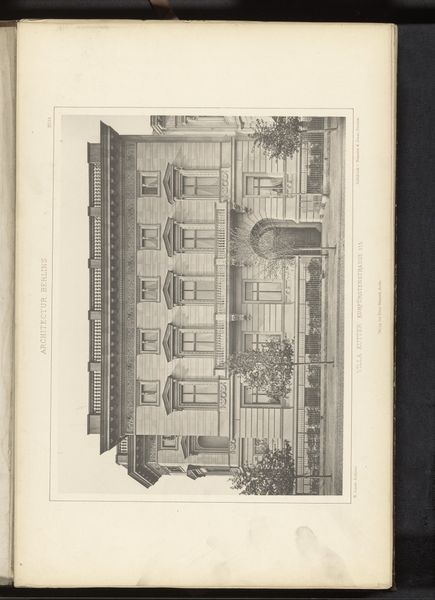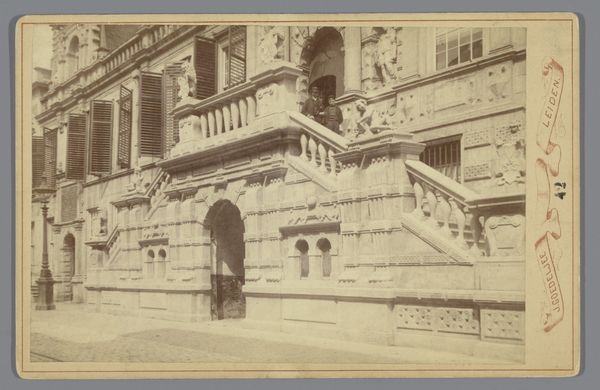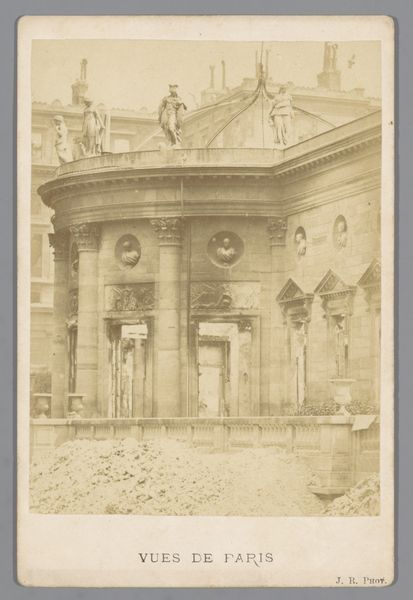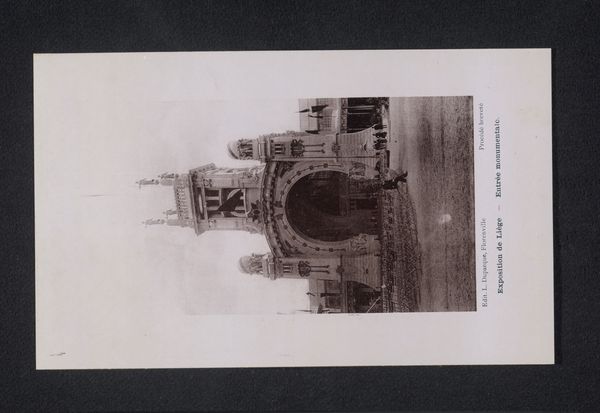
print, photography, albumen-print, architecture
#
aged paper
#
toned paper
#
homemade paper
#
16_19th-century
#
paper non-digital material
# print
#
sketch book
#
photography
#
personal sketchbook
#
folded paper
#
cityscape
#
paper medium
#
design on paper
#
watercolor
#
albumen-print
#
architecture
#
realism
Dimensions: height 62 mm, width 101 mm
Copyright: Rijks Museum: Open Domain
Curator: The sepia tones of this photograph lend a remarkable sense of history. Giacomo Brogi captured the façade of the Certosa di Pavia sometime between 1865 and 1881 using the albumen print process. Editor: My first thought is 'imposing'. Look at the scale of the facade; the image practically vibrates with this powerful, silent monumentality. Even the muted palette feels pregnant with unspoken stories. Curator: Indeed. Albumen prints, popular in the mid-19th century, involved coating paper with egg white and then a silver nitrate solution. This process really became democratized through the mass tourism that defined the era, capturing places of cultural pilgrimage like this grand Carthusian monastery. We see how photography started contributing to cultural heritage preservation, offering people easy access to remarkable places. Editor: And Pavia's Certosa holds such a symbolic weight. The Carthusian order's commitment to silence and solitude infuses this place with layered meanings, which this image reflects so aptly. Look at the geometric precision and balance: circle and square and repeating bays. But consider that geometry – such rigid architecture might embody power and control… and perhaps something more stifling? Curator: Perhaps, but it’s vital to consider context: the symbolism inherent in sacred geometry. Notice the upward thrust of the spires. Gothic elements employed within that Renaissance facade suggest, on a symbolic level, our constant reach towards enlightenment. Also, by using photography, Brogi captured the essence and the cultural memory of a significant place for many Europeans. Editor: Photography and symbolism -- such fascinating ideas woven together! I wonder if it made sacred spaces accessible and comprehensible. Curator: The sheer technical accomplishment suggests an act of devotion to art and beauty, especially when access was far more complicated than now. The façade, almost dreamlike, gives me pause. Editor: For me, it’s a strong reminder about how even quiet photography has actively built -- and perhaps manipulated -- public perception around landmark achievements in European art and architecture. Food for thought.
Comments
No comments
Be the first to comment and join the conversation on the ultimate creative platform.

